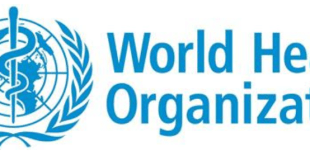· Credit demand reached an all-time high in March 2022, growing nearly 40% year-on-year
· Financial inclusion continued an upward trajectory, with rural and semi-urban consumers showing increased credit market participation
· Delinquencies improved for all major retail lending categories
India, July 19, 2022 – TransUnion CIBIL today released findings from the latest edition of its Credit Market Indicator (CMI) report. Its insights showed that the continued resurgence of India’s retail credit industry is built on strong fundamentals. Notably, the CMI’s single headline measure, designed to provide India’s credit industry with a reliable and contemporary benchmark of retail lending health, is trending upwards and showed a similar level in March 2022 (at 95) seen in March 2020 (at 94) which was the last month before the full impact of the pandemic hit (with the first lockdown in India only at the end of this month).
Chart 1: Monthly CMI (December 2019-March 2022)i
Chart, line chart
Description automatically generated
Source: TransUnion CIBIL consumer credit database.
(i) When selecting certain variables, year-on-year (YoY) movements are analyzed to remove the effects of seasonality. The increase in April 2021 CMI was temporary and driven primarily by an exponential increase in inquiries and originations in April 2021 compared to a lower base of April 2020. Inquiry and origination volumes increased YoY by 8.5 times and 5.2 times respectively in April 2021.
(ii) The March 2022 CMI value is provisional and subject to revision as additional data are reported to the TransUnion CIBIL credit bureau.
The CMI* is a comprehensive measure of data elements that are summarized on a monthly basis to analyze changes in credit market health and are categorized under four pillars: demand, supply, consumer behaviour and performance. These factors are combined into a single, comprehensive indicator, and pillars can also be viewed in more detail individually. The latest CMI of 95 is up considerably from its low of 78 in January 2021 and continues to show a consistent increase.
Rajesh Kumar, Managing Director and CEO, TransUnion CIBIL, observed: “Not only are we charting a general increase in our headline CMI measure, but also observing decline in delinquencies, greater credit inclusion, and growth of credit in rural and semi-urban areas. These fundamentals are laying the foundations for future growth and the continued resurgence of India’s credit market.”
Strong demand and supply supported by healthy credit performance
Originations—a measure of new accounts opened and is a function of both consumer demand and lender willingness to advance credit—increased across all lender types YoY in March 2022 and were most improved for PVT (private) Banks (up 47%), followed by NBFCs (non-banking financial companies – up 42%). Although PSU (public) banks recorded a comparatively measured increase in originations (still strong at 17%), lenders in this category increased outstanding balances the most – up 17% YoY in March 2022 (PVT: 14%, NBFC: 2%). It should be observed that PSU lenders experienced less of a negative impact in the earlier stages of the pandemic because they were amongst the quickest to resume lending post the initial lockdown, and thus had built up momentum in originations in earlier quarters.
The latest data shows a continued growth in origination volumes for consumption loan products, driven by both improvement in demand for these products and lender willingness to advance credit. Personal loan originations increased 125% YoY in Q1 2022, credit cards 59% and consumer durable loans 21%, indicating positive consumer sentiment towards consumption spending.
Inquiries—a measure of consumers applying for new credit—registered an all-time high in March 2022, with a robust year-on-year (YoY) demand increase.
Importantly, whilst credit demand and outstanding balances increased, credit performance has remained robust, with balance-level delinquencies improving YoY in March 2022 across all major credit products. This is a positive indicator of the outlook for sustainable and profitable growth for lenders.
Table 1: YoY Improvement in Balance-Level Delinquencies
Product
90+ Day-Past-Due Balance-Level Delinquency Rate
YoY Change – Basis Points (bps)
Home Loan
1.17%
-67
LAP
2.92%
-108
Auto Loan
0.98%
-43
Two-Wheeler Loan
2.45%
-135
Personal Loan
0.86%
-54
Credit Card
2.03%
-88
Consumer Durable Loan
1.55%
-168
Source: TransUnion CIBIL consumer credit database.
Kumar observed: “Encouragingly, whilst demand and lending balances increased overall, delinquencies have also improved. At the same time, measures of financial inclusion have also improved. This suggests that consumers are increasingly able to service their borrowing commitments whilst also being able to access existing credit or apply for new credit facilities. This bodes well for future economic prosperity as credit can often act as a catalyst for growth.”
Financial inclusion on the rise, as rural and semi-urban areas increased participation
A continued feature of the recovery has been increased credit penetration. Driven by greater financial inclusion across geographies, gender and demographic groups, credit penetration—the percentage of the adult population that is credit active—grew to above 21% in March 2022, up from 18% in March 2020.
When looking at geographic financial inclusion, the rise of rural and semi-urban borrowers is significant. The latest March CMI shows that together these groups now account for almost half (47%) of inquiry volumes – up from 41% in Q1 2020 and 45% in Q1 2021.
Chart 2: Inquiry Volume by Geographic Tier (3-months ending March 2022)
Chart, bar chart
Description automatically generated
Source: TransUnion CIBIL consumer credit database.
Kumar concluded: “Whilst we have still not yet achieved a full market recovery, especially with the joint global economic headwinds of rising inflation and stagnating growth, it is encouraging to see how quick and how strong the resurgence of the India credit market has been. With sustained growth in consumer demand, lenders must continue to improve supply of credit while managing the quality of their portfolios astutely.”
 Newspatrolling.com News cum Content Syndication Portal Online
Newspatrolling.com News cum Content Syndication Portal Online





